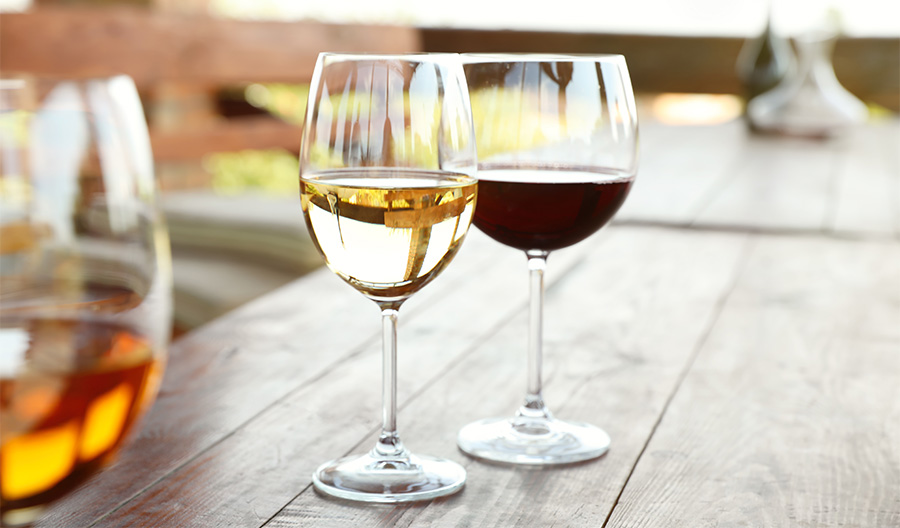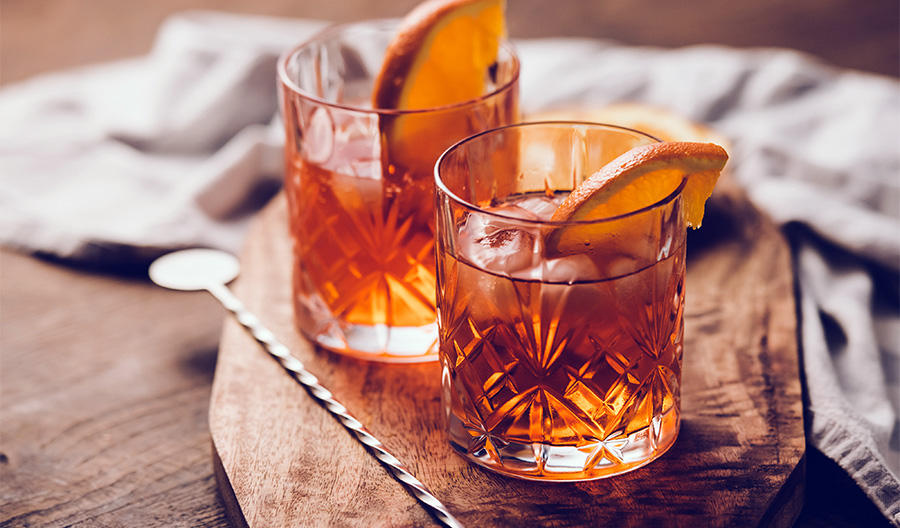Are you overwhelmed by the seemingly endless array of glassware options? Maybe you’re unsure of what your bar needs. Don’t worry, Proof is here to help!
Before we get into glassware specifics, there are a few variables to keep in mind when planning your selections beyond all the beautiful beverages going into said glasses. Some crucial considerations include:
Your vibe
An upscale cocktail lounge demands different glassware than a fast-paced sports bar. Choose what will suit the type of drinks you serve and the overall feel and pace of your establishment. Think of it as an extension of your business’s personal style. Bonus tip: Don’t forget that hand-wash-only glasses will slow down service.
Your space
Glassware takes up a significant amount of physical space, and the more types of drinks you serve, the more types of glasses you’ll need. If you don’t have tons of real estate to work with, be sure to look for glassware that is multipurpose and can work across a variety of drinks.
Your budget
The price tag on glassware can range widely. But whether you are looking for top-of-the-line custom crystal or sturdy, economical items that can withstand time, you should be prepared to make an investment. (And, like it or not, glassware will get broken and need to be replaced.) Your best bet is to find a middle ground between cost-effectiveness, style, and practicality.
Once you’ve nailed down these three parameters, it’s time to start selecting! Here’s a quick guide on the most common types of glassware and its uses.
Wine

The type of glass in which wine is served can significantly impact the drinker’s overall experience. The primary difference between red and white wine glasses is the size of the bowl.
A red wine glass has a rounder, larger bowl to accelerate the aeration process and “open up” the wine’s aroma and flavor.
A white wine glass has a shorter bowl and narrower opening to preserve the wine’s cooler temperatures and more delicate aromas.
The tall, narrow bowl of a Champagne flute helps retain the bubbles and enhance the flavors of sparkling wines of all varieties.
Note: There are universal wine glasses that work for both reds and whites, which can be a good choice for bars or restaurants where wine is not the focal point.
Beer
There are many different styles of beer glasses out there—enough for a whole guide in itself! But unless you are a craft brewery, you can get by with selecting a few options to cover the most common categories of beer. The key thing to remember is that beer glassware works similarly to wine in that the shape of the glass can impact the overall sensory experience. Tall, slender glasses help trap carbonation and preserve a beer’s foam “head.” Thicker, larger glasses keep beer cold and offer more volume. Depending on your space and your menu, including Pint, Pilsner, Belgian, and Mug-style glasses will cover most of your beer bases.
Martini
The Martini glass’s distinctive “V” shape holds about 6 ounces of liquid and requires the drinker to sip carefully, so it works well for strained cocktails that are primarily spirits—think Cosmos, Sidecars, and (of course) Martinis. It’s often universally referred to as a “cocktail glass.”
Coupe
The Coupe’s rounder shape makes it a bit more stable and less prone to spilling than the traditional Martini glass, and it’s fast becoming the favored choice for many modern cocktail bars. The long stem and wide bowl work well for showing off the color of a cocktail and keeping “up” drinks cold. Any drink that works in a Martini glass will work in a Coupe.
Nick & Nora
Nick and Nora glasses have seen something of a renaissance in recent years. Named after the husband-and-wife detective team from Dashiell Hammet’s 1934 novel The Thin Man, these stemmed glasses fall somewhere between a martini glass and a coupe, perfect for stiff, stirred cocktails using 3 to 4 ounces of liquor and modifiers, like Manhattans, Gimlets, and Vespers. The higher, rounded sides offer the added benefit of being nearly spill-proof and space-saving, too.
Highball/Collins
These tall, straight glasses typically hold 8 to 14 ounces and are designed to be filled with ice, making them ideal for mixed drinks built directly in the glass. A highball glass is technically a bit shorter and wider than a Collins glass, and works well for straightforward options like Rum and Coke, Dark and Stormy, etc. Collins glasses hold 10 to 14 ounces, giving them room for drinks with more than one mixer (Mojitos, Palomas, Tom Collins, etc.). However, either option will get the job done!
Old Fashioned/Rocks

Short, bottom-heavy Rocks glasses are the perfect messenger for neat/straight pour liquors, such as bourbon or scotch, and short, mixed drinks that are primarily spirits. Their shape makes it easy to muddle, stir, and add a large ice cube or two to cocktails such as Old Fashioned, Sazerac, Negroni, and Whiskey Sour.
Margarita
The double bowl shape and wide rim of the Margarita glass allow the drinker to enjoy the aromatics of the drink and any rim coatings such as salt or sugar, perfect for Margaritas, Daiquiris, and other frozen concoctions. That said, Margaritas serve up just as well in Rocks or Highball glasses if you need to streamline your glassware selection.
Snifter
A snifter is a short-stemmed glass with a wide bottom and narrow top. This shape allows the drink to be swirled while trapping aromas so the drinker can enjoy a more prominent smell as they sip. Snifters are mostly used for brown spirits, such as cognac, other brandies, whiskey, and port or other fortified wines.
Shot
A shot glass works for straight shots or mixed shooters and can take the place of a jigger for measuring ingredients. Fun fact: the heavy base of a shot glass was designed to prevent the glass from shattering when the drinker slams it onto the bar after downing the shot.
Now that you are armed with the info you need, be sure to stop by Proof’s Drinkware section; you’ll find a variety of glassware and other essential barware accessories.

